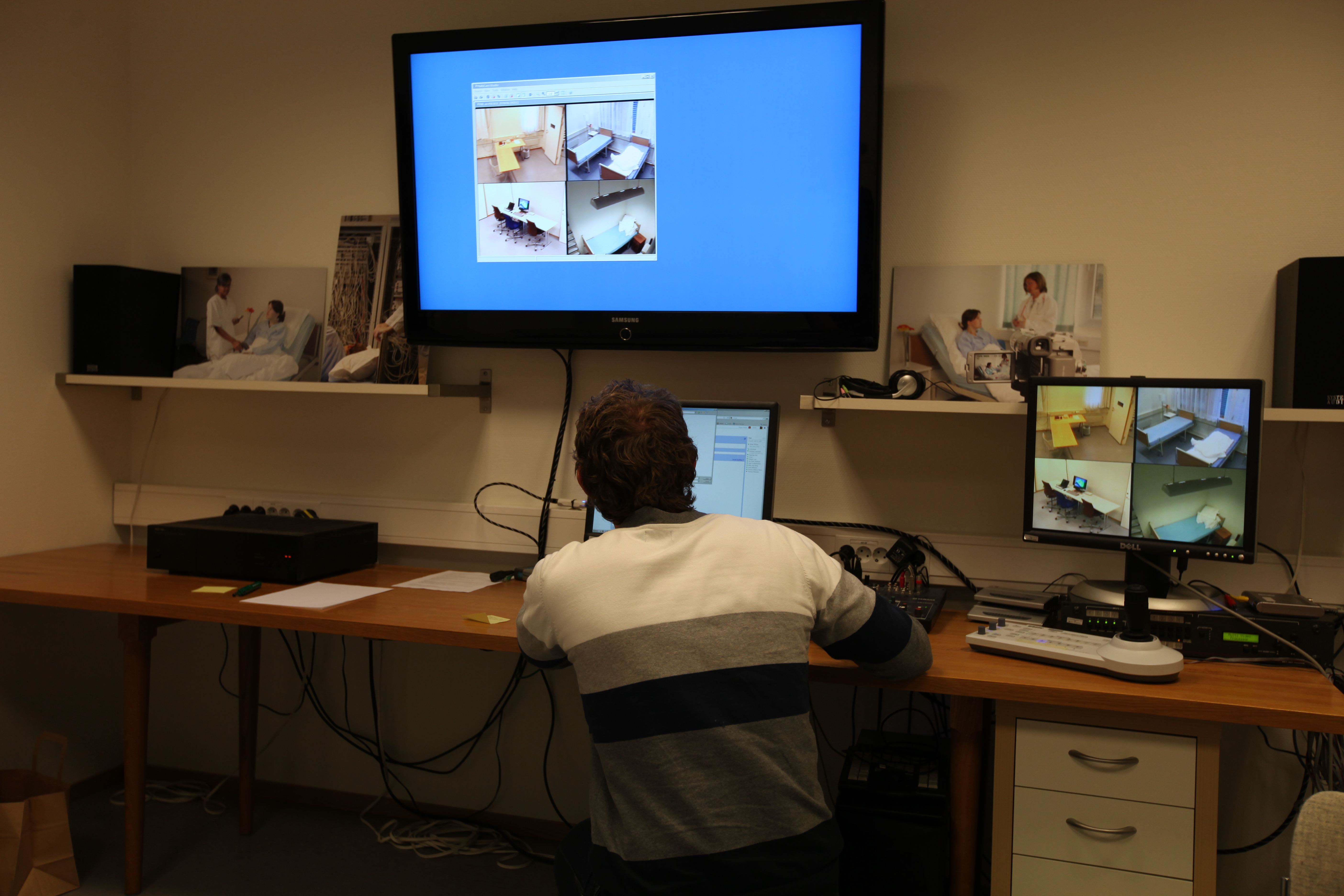NTNU Health Informatics Usability and Design Lab
Issue: XXII.3 May - June 2015Page: 16
Digital Citation
Authors:
Dag Svanæs
How do you describe your lab to visitors? The NTNU Health Informatics Usability and Design Lab allows for full-scale clinical simulations of health IT systems with health workers and patients in realistic hospital settings. This is useful in all phases of a design process, from problem identification to co-design, prototyping, development, and evaluation. The lab is part of the National Norwegian Research Centre on Electronic Health Records (NSEP) at NTNU University Hospital campus in Trondheim, Norway.
What is a unique feature of your lab? Electronic health record (EHR) systems have traditionally been desktop-based, but we currently see a move toward mobile EHR solutions in hospitals. Usability testing of this new generation of EHR systems makes it necessary to simulate important properties of the work environment, such as the physical setting and the social interaction in the clinic. This requires a laboratory that allows for full-scale usability tests with multiple users simultaneously. The NTNU lab has approximately 50 square meters of open space with reconfigurable recording equipment, which makes it well suited for this purpose. In addition to state-of-the-art recording equipment with roof-mounted cameras and wireless microphones, the lab also has an eye tracker that has been used extensively in usability tests.
How many people are in the lab, and what is the mix of backgrounds and roles? The lab is managed by the computer and information science department at NTNU and has one lab engineer, Terje Røsand. The NSEP Research Centre, which hosts the lab, is a collaboration of the Schools of Computer Science, Medicine, and the Social Sciences at NTNU. The lab has been used in a number of research projects at NSEP, in most cases in close cooperation with clinics at university hospitals. Examples include full-scale simulation of new EHR systems for hospitals, role play and low-fi prototyping of new mobile EHR solutions with nurses and physicians, co-design of a social media solution for obesity patients, usability testing of full-body exergames with elderly patients, usability testing of location-based services for the hospital, usability testing of a self-reporting system for COPD patients, and prototyping and evaluation of fall sensors for the elderly.
Describe a day in the life of your lab. A day in the lab would typically involve preparations for a usability test. A current example is a student project on sensor-based haptic feedback on walkers (rullators) for visually impaired elderly patients. The preparation consists of giving the student a helping hand with the Arduino-based prototype on the walker to ensure the ultrasound sensors will survive the usability tests, recruiting users through a clinic at the hospital, and configuring the lab to simulate a realistic situation from the user's life.
The most important role of the lab is to give credibility to a design and usability perspective on medical technology locally.
What is one feature of your lab that you could not do without? The large space that allows us to mimic real-world use contexts.
What is one feature of your lab you want and do not have? Eye-tracker glasses.
How would you describe how people interact in your lab? The lab has become a melting pot, where researchers and students from computer science, industrial design, the social sciences, and medicine meet to explore potentials of digital technology for the medical domain.
What is the one thing you see as most important about the work you do there? The most important role of the lab is to give credibility to a design and usability perspective on medical technology locally. Both in the hospital setting and at the university, a physical lab becomes a kind of totem that gives credibility to the research we do as being "scientific"—although much of the research could have been done without a physical lab.
 Figure. Exploring innovative ways of utilizing digital technology through a clinical simulation.
Figure. Exploring innovative ways of utilizing digital technology through a clinical simulation.
 Figure. Analyzing eye-tracking data from a usability test.
Figure. Analyzing eye-tracking data from a usability test.
 Figure. New technology is often evaluated with teams of health workers.
Figure. New technology is often evaluated with teams of health workers.
 Figure. Full-scale replication of a clinical setting.
Figure. Full-scale replication of a clinical setting.
Copyright held by author
The Digital Library is published by the Association for Computing Machinery. Copyright © 2015 ACM, Inc.



